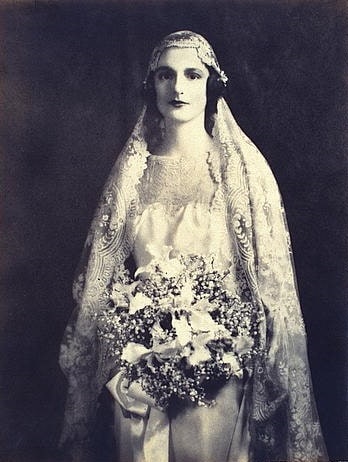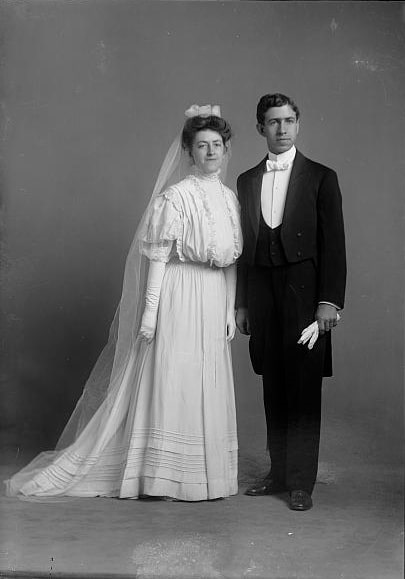Seeking out information about your family from generations past is challenging. One of the biggest hurdles to overcome is how to find someone’s maiden name. Without the maiden names from the women in your family tree, you are missing out on approximately half of your lineage.
Unfortunately, archaic practices mean that how to find someone’s mother’s maiden name is easier said than done. While there are firm records now, this was far from the case in the past, even for widows.
So, if you have ever wondered, “what is my mother’s maiden name?” and she’s no longer around to ask, here’s how to do it with the help of genealogy records.

What Is a Maiden Name for a Woman?
To understand how to find a woman’s maiden name, you first need to know what a maiden name is.
A woman’s maiden name is the family surname she carries from birth until she gets married. Since this is the name of her bloodline, her descendants can use it to trace their matriarchal lineage and learn more about their heritage.
The custom of a woman adopting her new husband’s last name after getting married dates back generations. The United States has no laws requiring a woman to change her name, but it remains a tradition that’s truly alive and well.
Historically, people had no surnames unless they were part of the elite classes within their communities. Early medieval people were only known by one name, their Christian name.
It was only after the population grew that surnames appeared to differentiate people. Initial surnames were based on location, lineage, or even occupation. Today, this is where many common surnames originate.
It was only in ninth-century England that common law saw the arrival of the doctrine of coverture. In other words, once a woman married, she became one with her husband, which also involved taking his surname.
Coverture means “covered by,” and under this doctrine a woman had no legal rights independent of her husband.
Coverture laws went further, including preventing women from owning real estate, engaging in business, or entering legally binding contracts. The United States adopted coverture laws.
How the Laws Have Changed
The mid-1800s saw the Married Women’s Property Act passed in several U.S. states, finally giving women an individual legal status.
Despite the changing of laws, one aspect remains: most American women continue to take their husbands’ last names. Today, approximately 20% of married American women retain their birth names, which is a lower percentage than in the 1970s.
Even though the idea of taking the man’s surname was considered an essential wedding tradition, it originates from when women were considered property of their husbands and had no individual legal rights.
This tradition endures, with no signs that anything will change in this respect soon.
Was a Woman Legally Obliged to Change Her Name?
Women were never legally obliged to change their names. There has never been an American law that forced a woman to accept her husband’s last name.
However, common practice often forced their hand. It would have been considered strange and even offensive for a married woman not to change her name.
There were also practical consequences to refusing to take your husband’s last name. Before the 1970s, married women could not get passports, driving licenses, or even register to vote until they took their husband’s last name.
While there were no laws forcing women to change their names, the practices of the time meant they were – for all intents and purposes – forced into it.
How to Find Someone’s Maiden Name
Now that we’ve answered “what is a mother’s maiden name?” and the meaning behind it, how do you go about performing a maiden name search?
When it comes to how to find a maiden name of one of your relatives, there are several strategies to find them, living or deceased. GenealogyBank can also support you in your quest to find a mother’s maiden name.
Start with Their Marriage Record
The apparent method for how to find a maiden name from a married name is to find their marriage record. Marriage certificates should list the maiden surname of the bride – but not all do, especially from earlier times.
Remember, marriage certificates were only initially issued in 1639 in Massachusetts before gradually expanding to other states. However, recordkeeping across states is patchy, meaning you may have trouble with a more distant ancestor. You should also remember that older marriage certificates did not come in a standard format.
Some marriage records may not have a woman’s maiden name, but you can always look for the witness record. The name may be there.
What should you do if you cannot find someone’s marriage certificate?
Look for other marriage resources. Associated records like marriage licenses, newspaper announcements, banns, bonds, and divorce records are all places where a female ancestor’s maiden name may be listed.
Alternatively, you could go back one generation and look for an ancestor’s mother’s maiden name. You can use the same strategy for known siblings.
It’s also possible to step forward by searching for children’s marriages. In some states, a mother’s maiden name may appear on her children’s marriage records. Just note that if your ancestor was widowed or remarried, the name you see might not be her maiden name.
Cross-check any of these records with other sources if you find someone’s maiden name in this manner.

Use GenealogyBank to Find Your Ancestor’s Maiden Name
GenealogyBank is the U.S.’s largest digitized database of historical newspapers, with papers from more than 300 years of American history. You can also use GenealogyBank to search for other records, including official censuses, military records, and death records.
We make it easy for you to track down your ancestors. So, how do you go about finding the maiden name of one of your ancestors?
- Step One: Enter First, Middle, and Last Names
Begin by searching for the specific ancestor you’re researching or for a known ancestor close to the woman you seek.
If you know their full name, enter first, middle, and last names into the search box. Many people have similar names, so finding the person you want can be tough.
- Step Two: Refine Your Search
Start refining your search by adding keywords. Use everything you know about your ancestor to track them down.
For example, if you know that they lived in the same city for their entire adult lives, type the city’s name in the “Include These Keywords” box.
GenealogyBank combines all records as part of the general search feature to increase the odds of successfully finding your ancestor, so your Results List may have newspaper articles as well as census records, government reports, etc.
- Step Three: Add Exclusions
Another intelligent strategy to narrow down the number of results you’re receiving is to add exclusions. If you know that your ancestor was not a doctor but you keep getting results from someone with the same name who was a doctor, enter the keyword “doctor” in the “Exclude These Keywords” box.
Exclusions are best used when your ancestor has a common surname, and you need to trim down similar results.
- Step Four: Include a Year Range
If you have a rough idea of when your relative lived and died, including a year range can help filter out irrelevant results. It’s strongly recommended that you include a year range to narrow your results.
- Step Five: Begin Checking Records by Ordering the Results
You can order the results by oldest, newest, or best matches. Try these different ordering methods to see which makes it easier to find the ancestor you’re looking for.
Search for Birth and Death Records
It may seem impossible to search for someone’s birth certificate if you don’t know their maiden name – but not necessarily.
Work backward. Start with her death record. Some death records will contain the name of the deceased’s parents. Her mother may have remarried, so take any parental names with a grain of salt. Cross-checking with other sources will help you to discover whether someone has remarried, been widowed, or a relative was adopted.
Luckily for genealogy researchers, divorce was much rarer generations before, so the chances of someone remarrying were relatively low compared to the present day.
Finally, if you know the names of your ancestor’s children, search for their birth records instead. It can be an easy way of cross-referencing and ruling out that an ancestor remarried, since if the children were born before remarrying, they would still possess their original surnames.
Check Cemetery Records
GenealogyBank has worked hard to digitize records from various sources. However, covering centuries of history means that even today, not everything has been digitized.
Visiting the cemetery where a relative was buried and looking up their records may also reveal their maiden name. The burial records and headstones may contain information about your relative’s birth surname.

Delve into the Censuses
Official censuses are a gold mine for finding out about the people from the past. The benefit of a census is that they allow you to create a timeline for your ancestors.
So, what’s the easiest way to start with censuses?
Start in the present day and work your way backward. People often remained stationary within their communities for decades, so the chances are that if a relative died at one address, they were there for years before.
Work through each census, and due to the inclination of multigenerational households, you may find information on your other relatives. Eventually, you should come across your female relative’s maiden name the further you go back.
Censuses are often the foundation of genealogy research and for a good reason.
Jump into Old Newspaper Records
Newspapers are an invaluable resource for information on your ancestors because these were the hub of a community. Many people gained all their news from a single newspaper for generations in the times before the Internet.
Everything would be reported in the newspaper. Beyond news stories, you would also see birth, marriage, and death records.
Looking up newspaper obituaries for the deceased will often reveal their parents’ names. The same goes for wedding announcements. These newspaper records will contain the names of the bride, groom, and their respective parents.
Cross-checking your sources is vital when it comes to newspapers because these records were written not by officials but by ordinary newspaper editors. Records were often taken orally before being published. Misspellings of complex names were not uncommon.
Thankfully, GenealogyBank has the largest selection of newspaper records in the U.S. available to browse, so you have plenty of potential sources to review.
Think about Military Records
Wars are an important part of the American story. Your female ancestor likely did not see active combat in a war. Instead, she may have had a husband or son who served, was wounded, or died in a war.
Military pension records sometimes show a female relative’s maiden name listed. Also, marriage certificates may be found bundled with military records.
Remember, you will search for a male relative when inspecting military records. You’re hoping the military records on male ancestors are comprehensive enough to help you find information about his wife or mother.
Look Up the Land Records
Coverture laws meant that married women could not push claims on real estate and other types of property. However, if a woman were widowed, she would still receive any land deeds transferred to her.
Land deed transfers would have a formal record and may even contain the woman’s maiden name. Look out for any mention of “et ux,” which is Latin and means “and wife.”
Alternate Strategies for How to Find Someone’s Maiden Name
Sometimes, you have to think outside the box. The further you go back in time, the more challenging it becomes to get reliable information on people. Accurate recordkeeping is very much an invention of the modern era.
If you hit a dead end in your maiden name search, here are some bonus strategies to help you track down someone’s maiden name.
Look for Naming Patterns
America is a nation built on immigrants. It means you may encounter some complicated names when looking back through your family tree.
Think about cultural naming patterns. If you see any unusual names, look into them. Many people would take their father’s first or mother’s maiden name as their middle name. It is a practice that applies to both men and women.
Unusual middle names are well worth looking into for this reason. Even if it is not a maiden name, you may discover something interesting about your family. For example, some families have passed the same middle name across several generations.
Check Family Heirlooms, Records, and Photographs
Chances are you have some old photos or family heirlooms at home. Family Bibles, old books, and images may contain more than you think.
For example, it was common practice for people to write the names of people on the backs of photographs before putting them into frames.
You may also find some old schoolbooks from a relative. These may have been inscribed with their full name inside.
It’s also worth visiting older relatives to see if they have any of the same items at home. Politely ask if you can remove anything from their frames or settings to check for inscriptions. Take a small light as pen or pencil marks may have faded with the passing of the years.
Bring in Outside Help
Not all records will be available online. With the U.S. being vast and lacking a historically centralized record-keeping facility, states and communities were generally left to their own devices.
In this scenario, you may need to consider going old school and jumping in your car to hunt down your relatives the old-fashioned way.
Visit churches and reach out to them about their archives. You could also join online communities for amateur genealogists. Linking up with like-minded researchers could provide some assistance.
Switch to Another Relative
At times, you will find that you can go no further with your research. Rather than getting frustrated, switch to another relative instead.
Close relatives like sisters and cousins can provide insights into a whole set of branches in your family tree. Some people didn’t have that many official records, mainly if they were poor or illiterate.
Looking elsewhere in your family for help could inadvertently pull up the information you seek. Either way, you never know what you might find or how much of your family tree you might reveal.
Uncover Relatives You Never Knew You Had with GenealogyBank
Elusive maiden names are a common source of frustration for family researchers. Where record keeping is scant, the journey becomes a long one.
GenealogyBank provides you with helpful resources to track down a female relative’s last name. Begin searching the country’s largest selection of newspaper records and U.S. census records.
Explore over 330 years of newspapers and historical records in GenealogyBank. Discover your family story! Start a 7-Day Free Trial
Note on the header image: an illustration titled “The Bride” by N. Currier, 1847. Credit: Library of Congress, Prints and Photographs Division.

Excellent article.
We’re glad you found the article helpful, Lillian. Thanks for writing to us.
In the Iowa 1925 State Census, which is several pages long, look back to second page and there is a place where the individuals list their father and mother’s names, including the mother’s maiden name. This Census is a great reference for lots of info if you are lucky enough to have a person listed in it.
Thanks for sharing that tip, Charolette.